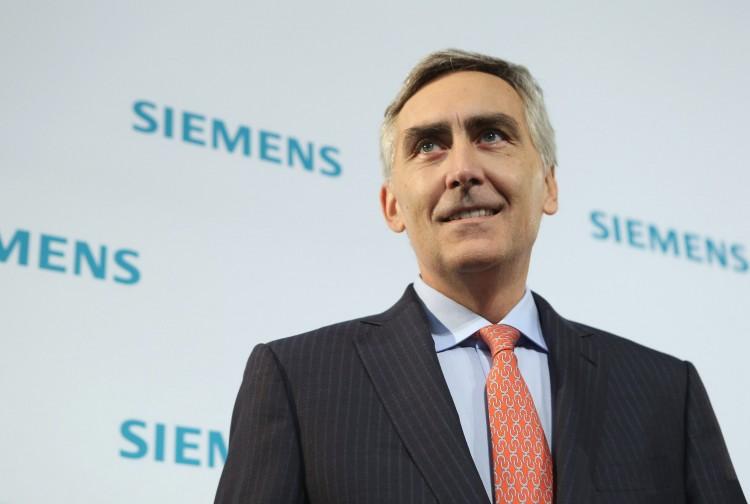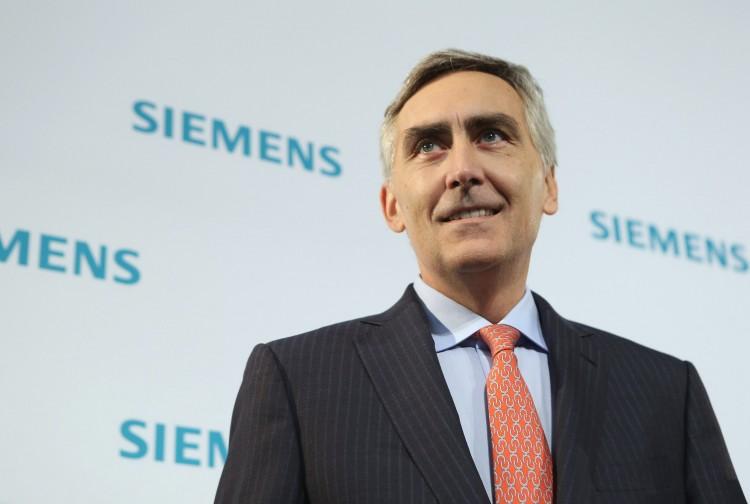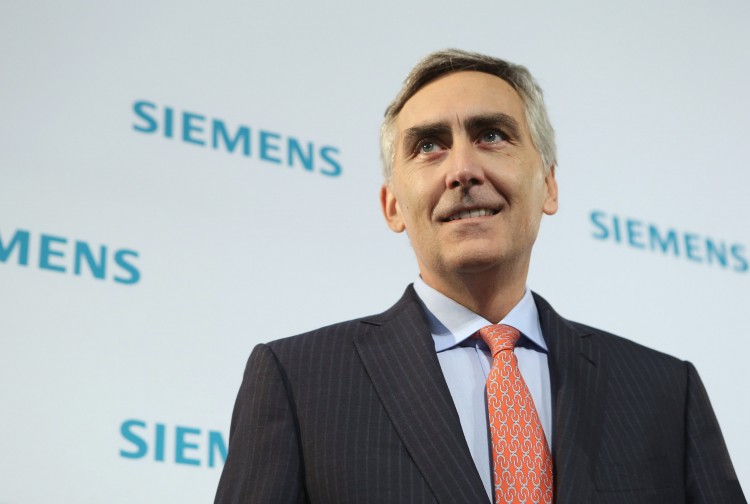Siemens AG reported the second best result in the company’s history Nov. 8, but net income declined 27 percent in 2012 and so did new orders. The Germany-based technology powerhouse, which operates primarily in the areas of industry, energy, and healthcare, also gave a challenging outlook and announced a $7.6 billion cost savings program.
“It’s clear that we want to achieve the demanding targets we have set for ourselves. And this means that we are aiming for a leading position among the competition. Somewhere in the middle of the field is not good enough for Siemens,” said Siemens CEO Peter Löscher at a press conference in Berlin.
Siemens competes with companies like U.S.-based General Electric, Netherlands-based Philips, and Japan-based Mitsubishi.
In spite of posting an annual net income of $5.9 billion, the CEO had a tough time selling the results to the press and investors. The main issue is that the net income figure, which is high in terms of the dollar amount, declined 27 percent year-over-year, suggesting a turning point could be in the making.
Revenues Up but New Orders Down
Revenue increased 7 percent to $100 billion, but new orders declined by 10 percent to $98 billion. This is one indication of a turning point. Siemens builds very capital-intensive goods, such as nuclear power plant equipment. Those take time to produce and install. This is why revenue is booked in increments from the order backlog, which was still strong in 2012. If new orders decline, revenues are bound to follow.
Siemens invested heavily after the financial crisis in 2008, boosting staff by 20,000 to 370,000. It was taken by surprise as the European sovereign debt crisis decreased economic activity, especially in Europe. The decline in new orders reflects the poor state of the economy there, where Siemens generates about half of its revenues.
Furthermore, recording lower net income on higher revenue usually means that costs are out of control. It is true that Siemens faces some structural cost issues. However, the main problem with these numbers lies in the extraordinary items and restructuring charges.
“Siemens’ Q4 results included many non-recurring items, which hampers analysis of the underlying trends,” writes Deutsche Bank in a report. The good news is that the write offs will not recur in the future. The bad news is that they stem from investments that were made to increase the company’s future growth. High profile businesses, such as the solar division and wastewater management, will be wound down at a large cost.
“Water Technologies is a regionally highly fragmented business that does not create synergies with the rest of our portfolio,” was Peter Löscher’s way of saying that the investment failed.
It also points to an underlying issue that Siemens is operating too many different industrial divisions. So far, the company has not found a way to make them work together profitably. This is something that Siemens can improve on, especially since competitors such as GE and Swedish ABB show that it’s possible. “Relative to competitors, we did not achieve the targets for new orders and profitability we had set our sights on,” said Löscher.
$7.6 Billion Cost Savings Program Until 2014
Despite the mixed numbers, Siemens shares were up 1.8 percent in German trading, and ended the day up 0.7 percent in New York, despite the down day on Wall Street. The stock market welcomed the $7.6 billion in cost savings that the management announced to increase profitability.
“Our goal is to raise the profit margins of our Sectors from 9.5 percent last fiscal year to at least 12 percent by 2014,” said the CEO. But some analysts remain skeptical.
“The vague nature of the plans implies that these are high level targets imposed from the center, not detailed bottom-up plans from the divisions,” said Deutsche Bank. The London-based analysts said that “this is an aspiration, not a plan,” because it lacks detail.
Siemens announced that it would save $3.8 billion from design, development, and production; $1.27 billion from “improving global capacity utilization and presence” and $1.27 billion from “improving the efficiency and quality of processes.” With respect to the remaining $1.27 billion, the company did not cite any specific measures.
The Epoch Times publishes in 35 countries and in 19 languages. Subscribe to our e-newsletter.







